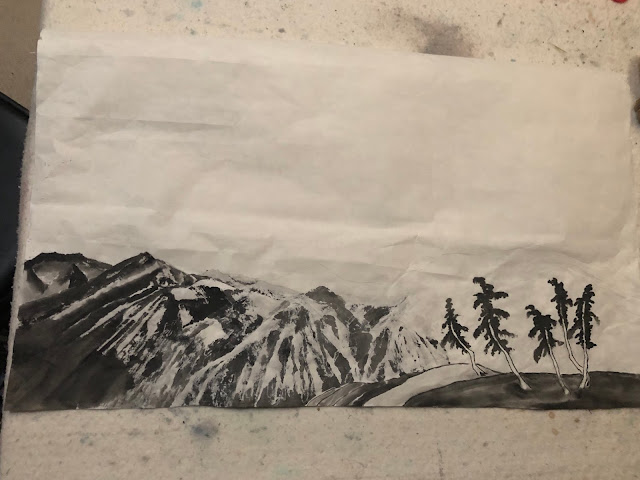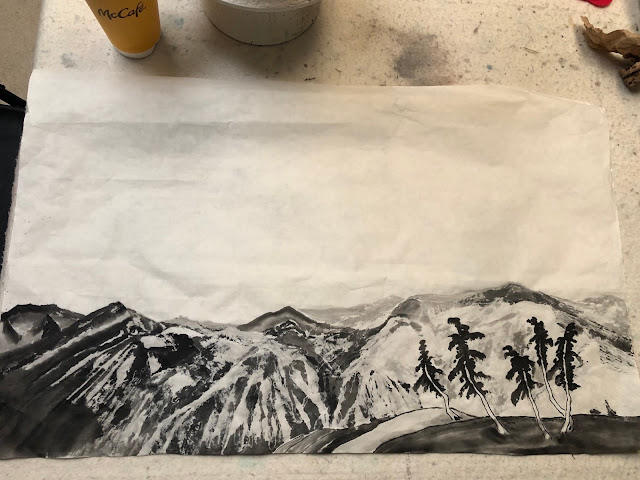But the inclination to paint dancers never left my mind.
Every time I practiced Chinese calligraphy, especially with the walking or grass script, I invariably think of the written characters as dancers. I pretend that each brushstroke describes a pose or a transition to a pose. I am leaning on this thought as my inspiration to do the opposite; perhaps I can paint the dancers with the idea that each pose somehow transforms to a Chinese character. Is it possible to use the dancers as a reflection of written words?
So I decided to paint dancers again. I decided to paint them like stick figures, to dispense with the banal requirement to paint faces and expressions and costume. I shall focus on the placement of the bodies and limbs of the dancers and their postures instead. Just like a well written calligraphy which possesses balanced form and proportion and energy, I am hoping to emulate that with my dancers. Since Chinese calligraphy is more than just an arrangement of sticks, as some store signs with faux Chinese styled bamboo alphabets would suggest, I shall paint my dancers as silhouettes. I trust the Chinese round brush for calligraphy is perfect for this task. With the correct amount of pressure or lift the artist can modulate the shape of the brushstroke. These brushstrokes should be rather useful in depicting the expressiveness of the forms and the profiles of the performers.
I started to paint various poses, and whatever came to mind. I didn't have a grand scheme of where to place my dancers or how many dancers would I be painting. I left everything to the whims of the moment.
The brushstrokes are treated as calligraphy. The shape of the brushstroke can be altered with judicious nudging or lifting of the brush.
The thought of treating the dancing profiles as part of the brushstrokes in the assembly of a Chinese written character helps to exude the expressiveness of the moment.
At the risk of sounding arrogant, I would be less than honest by not pointing out all the posers that I encounter in this town. Typically these people learned a little bit about Chinese painting and then claimed to be experts and started to teach Chinese brush painting. Whereas they totally lacked the Ji Ben Gong (fundamentals) they drew up something that looked a little exotic and passed that as Chinese painting. I suppose one can play a lot of songs with just chords but if that's all one knows, then this person shouldn't be teaching music. The image of Chop Suey was seared in mind. To me that was and remains the ultimate cultural shock.

























































